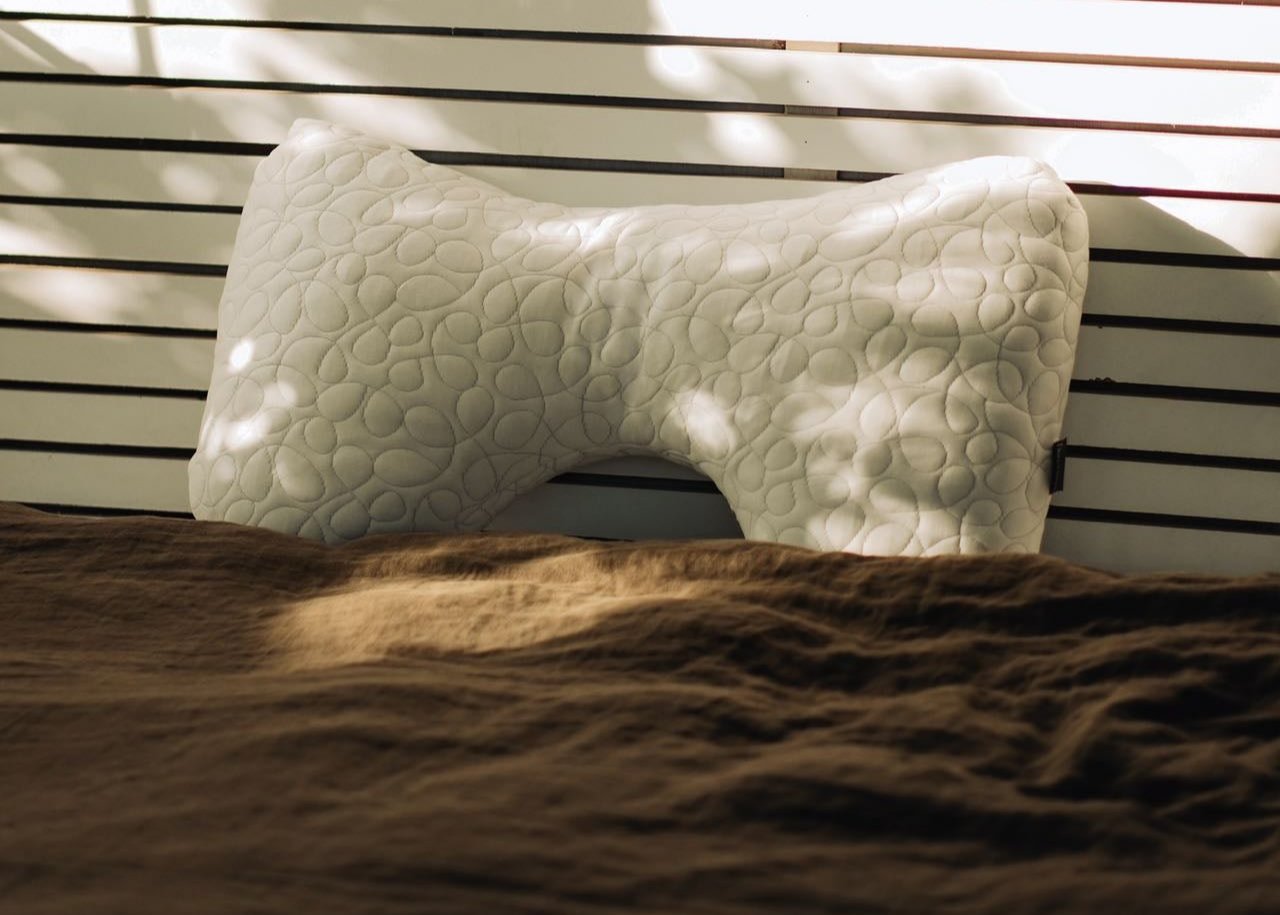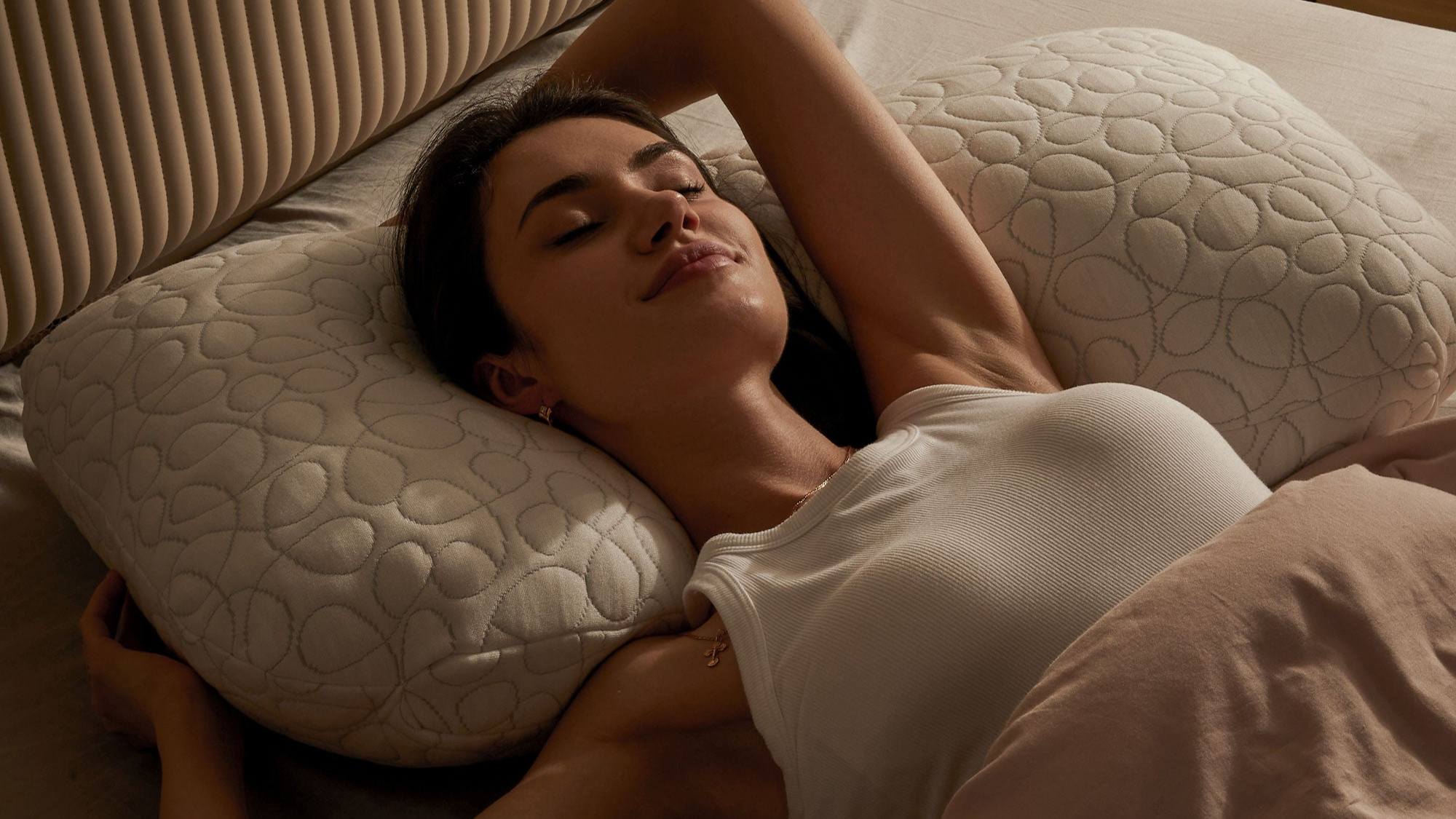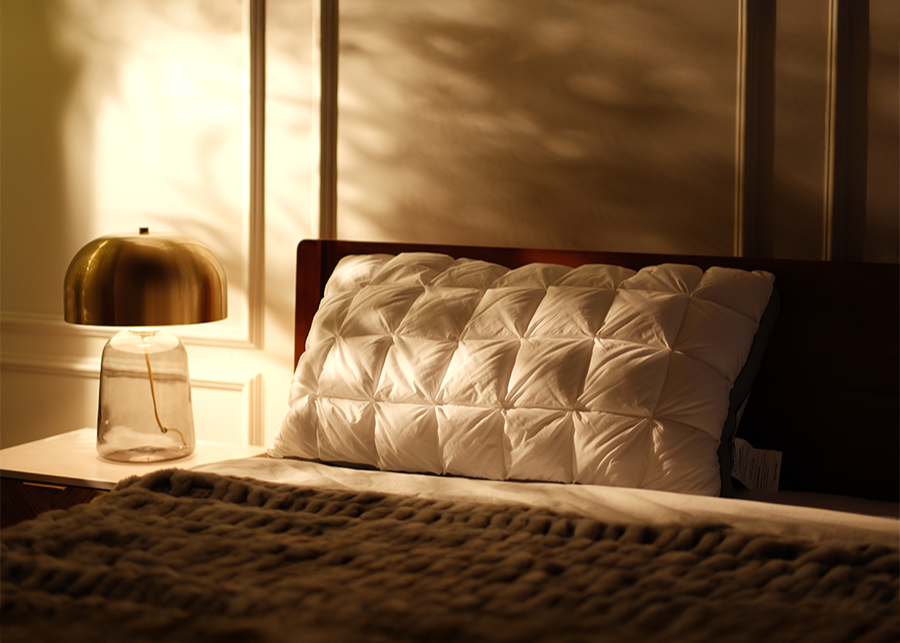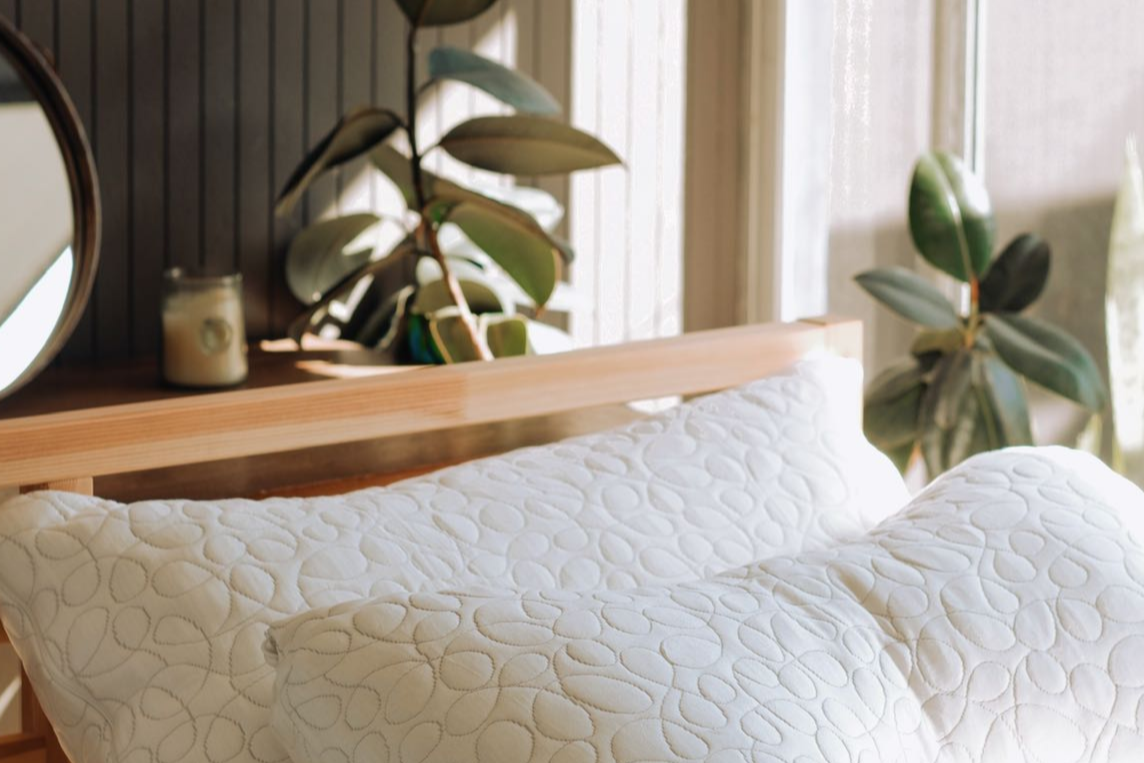A Guide to Pillow Filling Materials (Memory Foam, Down, Latex & More)
What’s inside your pillow affects everything from its softness and support to its lifespan and allergen potential. The market is filled with pillows made from different filling materials – memory foam, down, feather, polyester fiber, latex, buckwheat hulls, and beyond. In this guide, we’ll break down the most common pillow fills, along with their pros and cons, so you can decide which type might be the best fit for your sleep needs.
Memory Foam Pillows
Memory foam pillows are made of polyurethane foam (often enhanced with cooling gel or other additives). They contour closely to the shape of your head and neck, providing excellent support and pressure relief A key advantage of memory foam is that it helps maintain spinal alignment by molding to your curves, which can be great for people with neck or back pain. Pros: Memory foam is firm and supportive, so your head won’t sink too deeply. It’s also relatively durable, often outlasting other pillow types – a quality memory foam pillow can last around 2–3 years. Because it’s synthetic, memory foam is naturally hypoallergenic and resistant to dust mites. Cons: Memory foam can trap heat (though gel-infused and ventilated designs try to counter this). It’s also not machine-washable; you’ll need to spot clean it. Some people find foam pillows too firm or high initially – in that case, shredded memory foam pillows offer more softness and adjustability. In summary, if you prefer a pillow that is firmer and maintains its shape to support your head and neck, memory foam is a top contender.
Down and Feather Pillows
Traditional down pillows are filled with the soft inner plumage of ducks or geese, while feather pillows contain the outer feathers (often mixed with some down). These pillows are beloved for their cloud-like softness and moldability. You can squish and reshape a down pillow to your liking, and it provides a light, airy comfort. Pros: Down pillows are very soft and can be fluffed to adjust loft. They tend to sleep cool because they don’t retain as much heat as foam. High-quality down is also long-lasting (a well-cared-for down pillow can easily last 5+ years). Cons: The biggest downside is support: down and feather pillows do not offer firm support and can flatten out under the weight of your head. This may lead to neck pain for some, especially side sleepers who need more lift. You’ll likely need to re-fluff these pillows daily and replace them if they become too lumpy – down fill can clump over time. Also, down isn’t suitable for everyone; people with allergies might experience reactions to the natural feathers, or to dust mites that can accumulate. (Hypoallergenic, sterilized down and the use of pillow protectors can mitigate this.) There are also ethical and cost considerations – high-end goose down pillows can be expensive. In short, down pillows are ideal if you love a soft, scrunchable pillow and primarily sleep on your front or back, but they’re usually too lacking in support for strict side sleepers.
Polyester “Down Alternative” Pillows
Down alternative pillows are filled with synthetic fibers (often polyester) engineered to mimic the light, plush feel of down. These pillows are budget-friendly and hypoallergenic, making them a popular choice. Pros: Polyfill pillows are usually machine-washable for easy care, and they don’t contain allergens like natural down – great for those with sensitivities. They offer a soft, cuddly feel and can be suitable for all sleep positions depending on the loft and firmness of the specific pillow. They’re also less expensive than real down. Cons: A major drawback is durability. Polyester fill tends to clump and flatten out relatively quickly, often within a year or two of regular use. You may find yourself fluffing these pillows often and replacing them more frequently. In terms of support, down alternative pillows typically range from soft to medium firmness. They provide more support than down feathers initially, but as they compress during the night, they might not keep your head elevated enough if you need a firmer pillow. That said, some newer designs use improved fibers to offer better resilience. Overall, down alternative pillows are a good choice if you want softness on a budget or have allergies, but be prepared to replace them every 1–2 years as they lose loft.
Latex Pillows
Natural latex, derived from rubber tree sap, is another popular pillow fill. Latex pillows are often molded into a solid foam shape or made with shredded latex pieces. They are responsive and resilient – when you press on a latex pillow, it pushes back gently, unlike the slow sink of memory foam. Pros: Latex provides a buoyant support that can keep your head and neck aligned. It’s naturally breathable and tends to stay cooler than memory foam. Latex is also hypoallergenic and resistant to mold and dust mites, and it doesn’t off-gas smelly chemicals. A latex pillow can be quite durable, lasting for several years without significant sagging. Cons: These pillows often have a springy, firm feel, which not everyone loves (imagine a bouncy cushion that doesn’t hug your head as much as foam or down). They can also be heavy. Solid latex pillows have one set loft – you can’t adjust the height much, though shredded latex pillows allow some customization. Cost is another consideration: natural latex pillows tend to be pricier due to the cost of materials. If you prefer a pillow with medium-firm support and a bit of bounce, latex is worth a try, especially for hot sleepers (latex’s open-cell structure and ventilation holes help with cooling).
Buckwheat and Other Natural Fills
Buckwheat pillows are filled with the cleaned hulls of buckwheat seeds. They’ve been used in Asia for centuries and have gained popularity elsewhere for their unique, adjustable support. A buckwheat pillow feels firm and conforms to your head and neck by the hulls shifting and packing into shape around you. Pros: Buckwheat pillows offer excellent support and airflow. The hulls create a moldable yet firm pillow that holds your head in place; many people with neck pain or who like firmer pillows swear by them. They also sleep very cool – the air can circulate through the hulls, and they won’t trap heat like foam. You can usually add or remove hulls to adjust the pillow’s loft to your liking. They are all-natural and last a long time (you might occasionally need to top up with new hulls if they break down, but good-quality hulls take years to wear out). Cons: The obvious one is firmness – buckwheat pillows are among the firmest pillows available. If you want a soft, fluffy pillow, these are not for you. They also make a rustling sound when moved, which can bother light sleepers (though many people acclimate to it). And unlike a conventional pillow, you can’t just toss a buckwheat pillow in the wash – you’d have to empty the hulls first. Aside from buckwheat, other niche natural fills include kapok fiber (a silky plant fiber that’s light and fluffy like down) and wool (which wicks moisture and regulates temperature well). These can provide a more medium feel. In general, natural fill pillows like buckwheat, kapok, or wool are great for those seeking an eco-friendly pillow option with specific feel characteristics (ultra-firm support for buckwheat; soft and puffy for kapok; cozy and temperature-regulating for wool).
Every pillow material comes with trade-offs. Memory foam offers superior contouring support, while down gives unmatched softness. Down alternative is affordable and hypoallergenic, but falls short on longevity. For the pivotal support during sleep, we recommend DonaHona’s Cervical Pillow. It’s specifically engineered to support the natural curve of your neck all night long. Latex provides a cool, bouncy feel; buckwheat delivers firm, customizable support. The best fill for you depends on your comfort preferences, sleeping position, and any allergies or budget concerns. Consider what you want most from a pillow – be it plushness, firmness, cooling, or adjustability – and choose a fill that aligns with those needs. Often, the perfect pillow is found through a bit of trial and error, but understanding these material differences is a solid first step toward better sleep.










Leave a comment
This site is protected by hCaptcha and the hCaptcha Privacy Policy and Terms of Service apply.